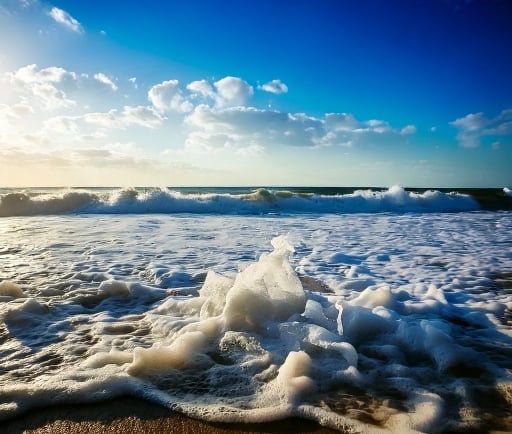Washing Ashore Oceanic Foams: The Role of Algal Blooms


Introduction to Oceanic Foams
The surface of the oceans is a dynamic ecosystem that presents a variety of phenomena, one of which is oceanic foam. This foam is not merely a visual characteristic but a significant ecological indicator of oceanic health. Understanding how algal blooms contribute to the formation of these foams can help deepen our appreciation for oceanic sciences and environmental monitoring.
The Process of Algal Blooms
Algal blooms occur when there is a rapid increase in the population of algae in aquatic environments. These blooms can be triggered by various factors, including nutrient overload from agricultural runoff, warm temperatures, and sunlight. When these conditions align, they lead to extensive growth, sometimes creating thick mats of algae visible on the ocean's surface. During the bloom's peak, these algae are teeming with life and contributing positively to the marine ecosystem. However, as these blooms decay, they lead to a significant environmental rhythm that must be recognized.
Decay and the Formation of Oceanic Foam
When large blooms of algae begin to decay offshore, they significantly impact the marine environment. The decomposing algal matter releases various substances into the water, including organic compounds and nutrients. As a result, this decay process stimulates the production of foam. The organic matter, when agitated by oceanic waves and currents, creates the foam we observe on the shorelines. This foam serves as a visual indicator of the health of the marine environment and signals the presence of decaying organic material.
The Impact of Algal Blooms and Foams
The thick sea foams generated from decayed algal blooms can have mixed impacts. On the one hand, they contribute to ecosystem processes such as nutrient cycling; on the other hand, heavy concentrations can lead to complications, including hypoxia—an oxygen-depleted environment detrimental to aquatic life. Understanding the balance and the circumstances that lead to these phenomena is crucial for environmental scientists and policymakers alike, as they strive to manage water quality and marine resource use effectively.
Conclusion
Oceanic foams and algal blooms represent an intricate part of marine ecosystems. While they provide essential ecological functions, they also present challenges that require careful monitoring. By studying these patterns, we can gain insights into broader environmental changes, helping us to protect our oceans for future generations.
